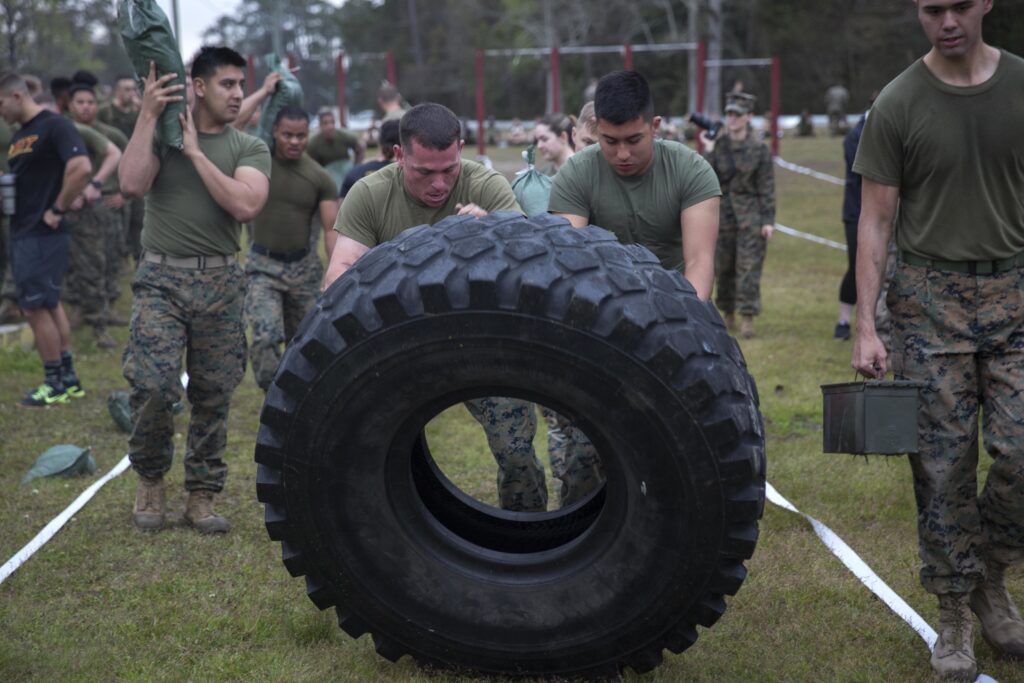Spring 2024
Integrating the unit training schedule

As strength and conditioning coaches (SCC) are aware, parameters must be met to train an attribute of fitness in a unit. See FM 7-22. Training must remain consistent and, if closely following the parameters, must have a feasible time allotment to remain holistic.
These characteristics may present themselves as unconducive to the army battle rhythm. The army battle rhythm consists of prolonged stints in the field, at schools, and with miscellaneous tasks that may pull soldiers away from daily structured physical training.
This poses the question “How can human performance team (HPT) ensure soldiers’ physical readiness amidst these challenges?” Unit buy-in to the HPT is paramount to success in the tactical setting. For this article, we define buy-in as the establishment of trust and relationship between the soldiers and HPT. Earning buy-in is not an expedient process. However, if earned sincerely, it will serve as the backbone of the human performance program.
With buy-in, the unit may offer the HPT the opportunity to integrate into the unit’s logistical planning, aligning initiatives with daily operations and adapting to shifting battle rhythms. The final portion of building buy-in comes by meeting with leadership at various levels to discuss their needs and goals relating to their physical readiness. Aside from building rapport with leadership, the HPT can learn the limitations, timelines, and vision for each level of leadership and can coordinate a plan for the weeks following.
Now having integrated and gained mutual familiarity between the HPT and the unit, SCC’s may begin building an approach to physical training (PT). Keeping in mind FM 7-22’s guidelines regarding frequency, intensity, time and recovery, we first examine the days and time allotted for PT and assess what is practical and holistic with the units’ goals, timelines, and availabilities. From here, we plan out the minimum recommended training dose for each attribute and expand accordingly.
Frequency is largely determined by the calendar. Whereas a routine week features 5 consecutive mornings of designated PT time, this is subject to change due to DONSA’s, taskings, late calls, and field exercises. Using the calendars can help the HPT determine the number of upcoming PT sessions. From this, you can align the number of upcoming PT sessions with the unit’s fitness goals and the minimum necessary dosage for each attribute and configure a plan. Therefore, programming for secondary and accessory goals should yield to the primary goals.
Training session frequency coincides with time per training session. By default, 90 minutes is allotted every weekday for unit PT. Sensibly, and in keeping with the guidelines of training each fitness attribute, the total time of the session will help determine the best approach to developing the sessions and the overall microcycle. Additionally, a time-constrained session places a higher importance on the SCC’s ability to plan training that accounts for the time necessary for a warm-up, the stimulus and all its components, transitions, and a cooldown. For example, a session that is usually allotted 90 minutes is reduced to 45 minutes. The session was originally planned to include blocks for power and strength, concluding with conditioning before the cooldown. To accommodate the time restriction, we have taken the approach of employing a block of contrast training followed by a block of either hypertrophy, muscular endurance, and/or conditioning.
» ALSO SEE: Functional tactical training adds muscular strength and endurance
Another approach taken is utilizing characteristics of vertical integration by exaggerating the distribution of time on the attributes that are the primary goal. In other words, keeping the structure of the original plan but redistributing time from the secondary and accessory work to the primary goals of the session. Intensity, volume, and rest are then determined by abiding by the guidelines of training each attribute. For elaboration see Chapter 6 of the FM 7-22.
Regardless of the nature of the training, the soldier must be able to recover to produce results. Without recovery, the risk of overtraining and injury rises drastically which is counterintuitive to the goals of the HPT and the soldier. Recovery comes from proper nutritional and hydrational practices, quality sleep, mobility and flexibility, and overall good habits conducive to health. With that said, this highlights the importance of a holistic health team working together to provide soldiers with the necessary resources to improve their physical readiness.


